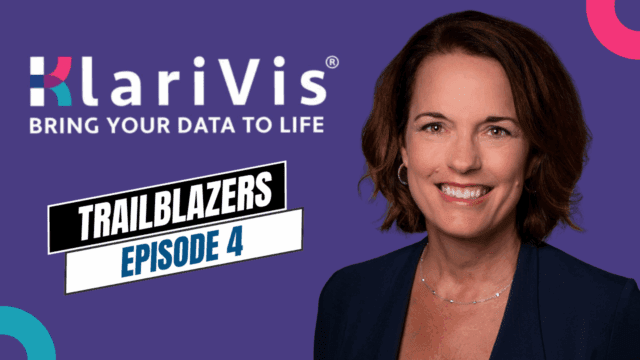Chime filed their S-1 with the SEC in May, putting the wheels back in motion to conduct an IPO at some point in the near-future, although no specific timeline has been communicated by the company. Chime, which is believed to have been valued at ~$25 billion during their last private capital raise in 2021 (about the same as the market capitalization of Fifth Third Bank and $10 billion higher than SoFi today), has FOURTEEN investment banks listed on the front of the prospectus.
Chime is a lightning rod, stirring strong opinions in the market. Most traditional bankers and bank-tech oriented professionals are seemingly negative (surprising…). And investment bankers, venture capitalists and other fintech investors are much more bullish (surprising…).
But who is right? The truth is nobody yet, because we don’t know what the valuation target range of the offering is. Almost all companies have some form of embedded value, and Chime certainly does. The LinkedIn chatter around Chime seems to miss the point: whether it’s a smart buy or an obvious sell is impossible to judge without knowing the valuation range their team of bankers plans to bring to market.
But before we chat too much about valuation, let’s first dig-in to see what Chime’s all about and how they are trying to create value. Please remember these views are not investment advice, and you should conduct your own research whenever considering future investments.
Chime Business: What Are They Doing and is it Novel?
Chime has built an interesting digital banking/payments business hell-bent on improving the financial wellness of under-banked Americans who have been overlooked by traditional banks – a noble cause. When I started KBW’s digital banking research efforts in 2015 by launching coverage of one of the major sponsor banks, Meta Financial Group (now Pathward Financial), I saw firsthand the impact banks could make on the everyday lives of people left behind by the “old” banking system. I also saw how easily wealthy investors and Wall Street folks could overlook the value creation of these novel digital strategies because the lives of the people Chime is built to serve are so far outside of their day-to-day lifestyle.
I remember a specific debate with a senior equity research peer about the viability of these bank-oriented platforms aimed at underserved individuals telling me about how terrific Chase Private Client was for them and they would never have a need for a prepaid card or neobank debit card (I smacked my forehead then, I still smack it now…).
Chime has amassed a significant number of customers (~8.6 million according to the S-1) who appear reasonably engaged with the platform (read as transacting monthly). They have introduced some innovative products which have helped them grow (like getting paid 2 days early), continue to partner with two great BaaS banks, The Bancorp and Stride Bank, who help them safely innovate and launch new products, and importantly, they have accomplished all this in a very methodical way from an enterprise decision-making perspective.
Continuing to Set the Stage: A Brief Relevant History
Chime’s CEO and Co-founder, Chris Britt, has an interesting background worth spending a minute on. From 2004-2007, Chris worked as a Senior Product Leader at Visa. From 2007 to 2012, Chris worked at Green Dot, first as their Chief Product Officer and then as Head of Corporate Development. Interestingly, it was just one year before Britt’s departure when Green Dot completed its acquisition of Bonneville Bank, which allowed the company to begin issuing its own cards.
Chris’ front row seat to the evolution of Green Dot’s growth strategy, (particularly around prepaid cards) and prior experience with Visa’s payment network, likely provided invaluable experience and context for Chris when he started Chime in 2013 with his co-founder Ryan King.
Chime is one of the original “neobank” business models and remains focused almost exclusively on underserved banking customers. These customers are typically classified as “unbanked” or “underbanked” individuals by bank regulators, although in the S-1 Chime defines their target market as the “75% of adult American population that earn up to $100,000 annually” – more on this in a minute.
Now Back to the Debate of Value Creation
There are a lot of unanswered questions that aren’t really addressed in the S-1. The obvious one most people seem to be talking about is the unsustainable level of marketing spend and its impact on growth, plus the significant reliance on interchange fees to drive revenues. More specifically, Chime spent over $500 million in full-year 2024 on marketing to support $1.5 billion of gross profit which is >70% driven by interchange-based fees on debit cards. On the surface, yikes.
Having said that, a closer look at the numbers tells a more measured story of slow improvement, although not fully clear to what end.
![All Eyez on [Chi]me (ft. Mike Perito) 1 Patient Long term Enterprise Decision Making Understands Target Customers Needs Strong Employee Culture From What We Can Tell Strong Customer Growth and Seemingly Good Core Engagement 1](https://www.travilliannext.com/wp-content/uploads/Patient-Long-term-Enterprise-Decision-Making-Understands-Target-Customers-Needs-Strong-Employee-Culture-From-What-We-Can-Tell-Strong-Customer-Growth-and-Seemingly-Good-Core-Engagement-1-640x128.png)
As we can see from the figures above, marketing spend as a percentage of gross profit has been steadily trending down, which I think is a broader positive for the platform. And while some might point to the slowing percentage of member growth in 2024 after Chime slowed relative marketing spend for a period of two consecutive years, we’d highlight that the theory of large numbers is a real thing. And in fact, the number of new members in 2024 of ~1.4 million exceeded new member growth in 2023 of ~1.3 million.
Said differently, the absolute number of new member growth hasn’t slowed as marketing spend has begun to decelerate.
When looking at Chime’s most recent results, first quarter generally was pretty good for Chime, with marketing spend less than 30% of gross profit. The company also showed better diversity of revenue generation with interchange falling to 72% of total versus ~80% in 2022 and 2023. And Chime has an annualized growth rate of new active members above 30%.
Ultimately, I think it is fair to say that this current pace of marketing spend is unsustainable if Chime wants to produce significant profits. However, I think it is worth noting that most major fintech growth platforms today are spending a lot on marketing to acquire customers at the cost of lower profits. Do we really believe Robinhood will offer 3% cash back on gold cards forever? Or that SoFi be one of the lowest rates on student loan refi in perpetuity? There is always a balance between customer acquisition/spend and building a business with long-term attractive economics. Sometimes these acquisition related costs don’t show up as “marketing” but that is what they are – just like when a bank runs a CD special or offers cash upfront to open a deposit account.
I’d also note that the data supporting Chime capturing the primary checking account of its customers is better than I would have expected. According to the S-1, 67% of Chime’s members are primary account relationships – which they define as members who route their paycheck or use Chime for 15+ transactions a month. That is pretty significant.
What seems like the more interesting debate, despite not being discussed as much, is the mere question of whether Chime’s platform is built for a problem of yesterday or tomorrow; and how can they adapt and drive their next phase of growth.
In the S-1, there is a comment under the “Competition” section page 182 that states “[we] believe the traditional banking system has not effectively served everyday Americans, most of whom live paycheck-to-paycheck and often have more modest account balances and limited credit histories. Traditional banks rely on a net interest margin-based business model with nearly 70% of their revenue coming from customer deposits and lending.”
There is a lot of objective truth to this statement, although I think the context here is pretty important and not fully vetted in the filing. Most fintechs – including big-names like LendingClub and SoFi – all generally start with strategies aimed at helping customers who are “underserved” by traditional banks or financial services platforms. Over-time they generally “grow-up” out of this focus for two reasons 1) the opportunities to make money on these customers diminishes as your platform grows, and 2) the focus is on a smaller subset of a broader target market which can be limiting from a growth factor, particularly as you hit certain points of scale.
Focusing in on one area of the quote though, “traditional banking system has not effectively served everyday Americans,” I believe there is a strong chance that this could be a diminishing truth over the next 10 years due to technology and open banking concepts.
This is critically important to this whole exercise, because how you value a company such as Chime is more driven by their growth opportunity and their ability to drive future profits versus any financial performance they are expecting today.
I don’t disagree with Chime’s identification of the problem. And when Chime started in 2013, this was a HUGE problem. According to the 2023 FDIC National Survey of Unbanked and Underbanked households, the national unbanked rate peaked in 2011 at approximately 12%. But it has steadily declined since, reaching 4.2% in 2023, and our expectation is this figure will continue falling due simply to digital banking and opening banking principles which have changed the way consumers interact with financial products and increased availability of low-fee digital checking accounts.
The story is a little bit more compelling for Chime’s target market when looking at “underbanked” individuals, which has been steady at approximately 19 million over the past few years, or about 14% of U.S. households, according to the 2021 and 2023 FDIC National Survey of Unbanked and Underbanked households.
This is where the analysis gets subjective, but I’d argue that the make-up of Chime’s. competition has morphed over the past 10 plus years of the company’s life. In the years leading up to the COVID-19 pandemic, I’d believe that Chime was taking most of its customers from traditional banks and prepaid card programs. Here’s why:
- There wasn’t much reason for banks to compete for these customer, making Chime’s relative competitive position favorable as they scaled up in the early days. Banks outside of the largest money centers, as Chime correctly points out, make most of their profit on net interest income, or the spread of their loans and other assets over their deposits and other interest-bearing liabilities. There isn’t much spread to be earned on underbanked customers, and during this period, deposits were readily available due in part to the low level of interest rates.
- Pre-paid cards have always been a band-aid covering a deeper problem. Underbanked customers never aspired to have a prepaid card; it was just the cheapest and most accessible financial product available to them that allowed them to link up a direct deposit and make purchases. It is not hard to imagine Chime successfully taking people out of prepaid card programs with the allure of a no-fee, easily accessible debit card/checking account products.
But what does Chime’s competitive landscape look like for the next ten years? As big as they claim their target market is, I would say the competitive nature of their next phase of growth will be a lot more difficult and expensive than the last ten years. Let’s break down our thesis:
- We expect natural selection in the bank space – where weaker, smaller, and less digital-oriented competitors are being acquired – should continue for the foreseeable future. The number of underserved, 40 and under consumers sitting at small and mid-sized banks is a lot smaller today than it was in 2013 and that number will keep getting smaller.
- The number of fintech competitors is significant; they have also benefited from natural selection over the past two years. Spend five minutes on Google and you will find a dozen plus competitive no-fee checking account offerings, with a lot of them offering high yields and sign-up bonuses.
- Technology and bank partnerships (the latter of which Chime also relies on) have lowered the utility of a checking account and debit card relative to a decade ago. We work closely with many of the BaaS banks in the industry, and there are literally hundreds of platforms looking to launch debit cards/checking programs at any given moment. Lots of them also have big established customer bases (check out Robinhood’s private banking announcement). This means Chime will have to rely on more product diversity and the extension of credit to continue growing over a multi-year time horizon, which has already begun to happen slowly (see Chime’s Credit Builder product). That isn’t to say Chime can’t be successful doing this, but their growth history doesn’t necessarily translate to automatic success here – plus risk can be higher when talking about credit programs.
- Payment technology continues to evolve, and quickly. While debit payments have grown over the past 10 years on an absolute basis, will it grow again over the next 10? Generally speaking, rewards and safety are superior with credit card purchases, but many of Chime’s customers may struggle to gain access to credit cards (hence their heavy use of debit cards on a month-to-month basis). You can also have other areas of disruption that have varying degrees of significance today but could grow in the future, such as peer-to-peer, stablecoins, internal bank-to-bank payment networks, etc.
The Valuation Matters and Is Hard to Predict
With some framework established on strengths, weaknesses, opportunities, and threats of Chime, we shift to the valuation side of the equation. Chime’s valuation stood at approximately $25 billion in 2021 when they last raised private capital. Since then, fintech valuations have fallen 50-75% depending on where you look – which would suggest an implied range of $6 to $12 billion. But we can dig a little deeper than that. To start, let’s think about what Chime does well, and what we need better answers for:
![All Eyez on [Chi]me (ft. Mike Perito) 2 Patient Long term Enterprise Decision Making Understands Target Customers Needs Strong Employee Culture From What We Can Tell Strong Customer Growth and Seemingly Good Core Engagement](https://www.travilliannext.com/wp-content/uploads/Patient-Long-term-Enterprise-Decision-Making-Understands-Target-Customers-Needs-Strong-Employee-Culture-From-What-We-Can-Tell-Strong-Customer-Growth-and-Seemingly-Good-Core-Engagement-640x128.png)
According to the website foreglobal.com, a secondary marketplace to trade private companies, Chime’s stock price was at $31.50 as of May 29, 2025. So we can back into an estimated valuation of about $11.37 billion. Let’s make some simple assumptions:
- Let’s adjust market capitalization for ~$500 million of net corporate cash and modest debt for an estimated enterprise value of $10.87 billion based on the $31.50 trading price.
- Year-over-year, adjusted EBITDA in 1Q25 grew 62% to $25 million from $15 million in 1Q24, if we assume a similar annualized growth rate that suggests about $130 to $140 million of adjusted EBITDA in full-year 2025 (estimated).
- This equates to a 77.0-83.0x EV / EBITDA multiple…
For context, some of the highest valued fintechs in the U.S. today, Robinhood (HOOD) and Coinbase (COIN) trade at 20-30x EV / EBITDA multiples based on 2025 projections. These are more mature platforms, and I’m sure the multiples would improve if you projected additional growth in 2026 adjusted EBITDA, but your assumptions become more significant in that exercise.
For this reason, I’d expect more bullish investors and market participants to focus on a price-to-sales valuation model. This model – which we don’t necessarily disagree with – does tend to be a more aggressive valuation method as it leaves out a LOT of important elements down the income statement.
Chime did $1.67 billion of revenue in 2024, and $518.7 million in 1Q25. It seems like there is some seasonality in Chime’s earnings which would make sense given their customer base (e.g., first quarter includes earned income tax credit, which is probably one of the largest paychecks Chime customers recieve annually, plus holiday spend). In 2024, first quarter revenue accounted for 30% of the full-year revenue, but we admit the sample size is small.
Let’s assume 25% revenue growth in 2025 which seems reasonable based on first quarter – that would suggest $2.1 billion of full-year revenue. Simple math would then point to a $10 – 12 billion valuation range representing 4.8x – 5.8x revenue, which I would argue is more reasonable when looking at higher-growth fintech valuations. Still, it could be a little high because most of Chime’s revenues are interchange today versus the more stable revenue sources of others in this category like recurring software revenue.
Market chatter seems to suggest valuation as high as >$25 billion to as low as $6-8 billion.
Final Word
It will be interesting to see where the valuation lands in the offering, and the estimates today are all over the place. For me – if we are looking at a 3.0-4.0x revenue multiple (or $6–8 billion), I think that looks pretty attractive and worth the risk profile of the company to potentially benefit from their higher growth. Any higher than that, and I think the risk / reward profile starts to skew in the wrong direction pretty quickly. A $6 billion valuation would still be a ~40.0x EV / EBITDA multiple based on the assumptions above, but again, I think that would start to look more in the 20-30x range in 2026 in-line with other higher-growth fintechs – which would make me more comfortable.
Bonus Round: Reacting to a Few Other Comments In Chime’s S-1
- “The average annual cost-to-serve a retail deposit customer is an estimated three times higher for the three largest incumbent banks and five times higher for mid-sized and regional banks when compared to Chime.143”
-
- What is footnote 143 you ask? Here you go… “Comparing average cost-to-serve for 2023 (in each case, excluding marketing costs) for the three largest banks by U.S. deposit volume (Bank of America, J.P. Morgan Chase, and Wells Fargo) and for a group of medium-sized and regional banks (BMO, KeyBank, PNC Bank, TD Bank, and U.S. Bank), in each case as estimated by FS Vector Report, to Chime’s average cost-to-serve for 2024; see the section titled “Industry, Market, and Other Data.”
-
- So to summarize, let’s take the three largest banks in the U.S., who you are also trying to convince me don’t even want your customer base which is why you can grow so fast, and then compare ourselves, the “software company,” to them AND adjust out our largest expense by a wide margin (marketing) when we do it. It is almost so silly I couldn’t even write it, how about just sticking to the facts Chime, like how your customer servicing costs haven’t really grown over the last 3 years as your customer base and revenue has. That is much more believable…
- “This deep understanding of our members created the muscle to focus on their most important needs and led to industry innovations like Get Paid 2 Days Early, fee-free checking and SpotMe Overdraft, Credit Builder Card, and MyPay.”
-
- I love creative ideas in a stale industry, and Chime has delivered on bringing some innovation to banking / payments since it opened its doors over a decade ago. Most digital platforms now offer some version of “Get Paid 2 Days Early,” credit building and fee-free checking – and Chime was a pioneer of these things. While competitive forces have made these attributes less unique than when they first started – I think Chime’s core competency of innovating a typically boring / low utility space is real and could be sustained into future periods.
-
- What are some of those future things that could impact the company’s growth rate.
-
-
- ChimeCore (proprietary payment processor and ledger)
-
-
-
- Chime+ (a free premium tier that unlocks certain upgrades like higher rates, cashback, enhanced support)
-
-
-
- Chime Workplace (partnering with employers directly to offer financial wellness benefits)
-
-
-
- MyPay (enables members to receive money in advance of payday up to a predetermined level)
-
- “Looking ahead, with less than five percent adoption in our core target market, we see an enormous opportunity to grow for years to come.”
-
- This seems like a slightly exaggerated reflection of Chime’s TAM and growth opportunity – however, sometimes we get caught up with our opinions and always trying to be the smartest person in the room at risk of missing the bigger picture. What Chime has accomplished to date is significant and should be celebrated. Am I willing to pay $10 billion for it? No. But they have worked hard over a decade plus to make a positive impact on the financial lives of millions of Americans who were being overlooked – and for that, they have our respect.











